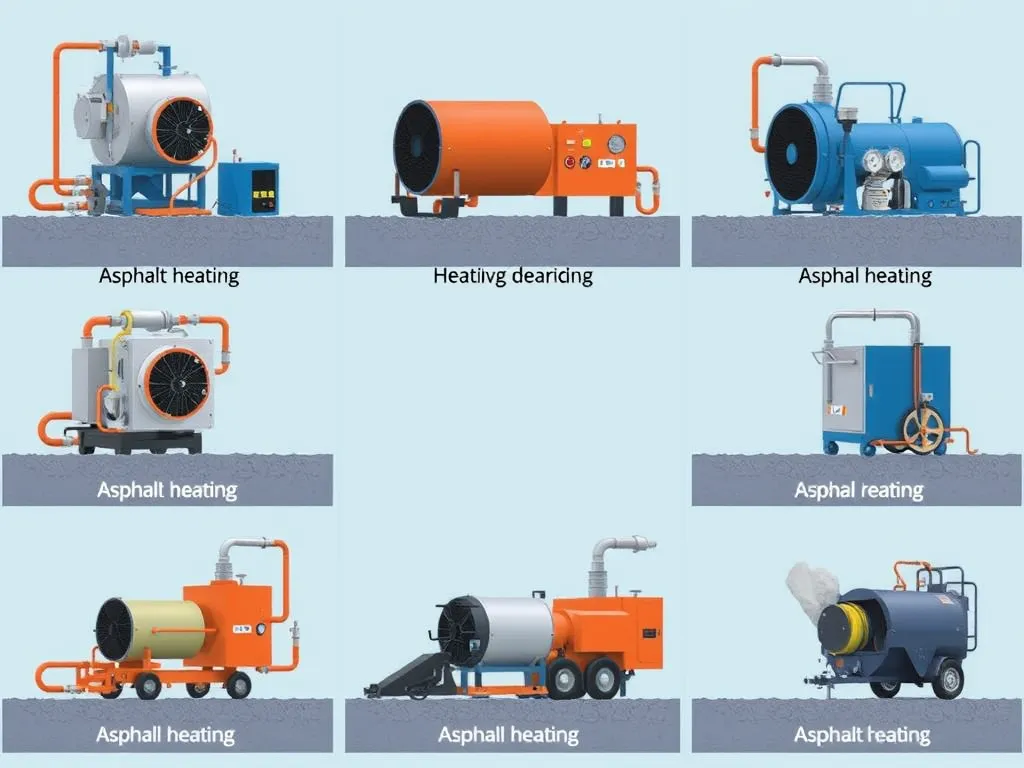Bitumen: The Sticky Backbone Of Modern Roads
Published on: September 11, 2025 | Last Updated: April 14, 2025
Written By: George Voss
Bitumen is a thick, black petroleum-based substance that binds asphalt mixes together. Different from asphalt itself—which blends bitumen with stone, sand, and gravel—this viscous material acts as the glue in pavement. Its waterproof nature and adhesive strength make it irreplaceable in road construction, sealing cracks and resisting weather damage. Grades like PG 64-22 (rated for -22°F to 64°F) adapt to temperature swings, while innovations like polymer-modified bitumen boost durability against heavy trucks.
This article breaks down bitumen’s science, history, and real-world impact. You’ll learn how ancient Babylonians used it to waterproof walls, why it’s not the same as asphalt, and how modern emulsions repair potholes. We’ll also explore recycling methods that reuse 90% of old asphalt and cost-saving techniques like warm-mix production. From Mesopotamian bricks to interstate highways, bitumen’s role remains unmatched.
Contents
What is Bitumen?
Bitumen is a thick, sticky black fluid. It forms when crude oil loses light gases through refining. This mix bonds rock and sand in asphalt roads.
Definition Of Bitumen
Bitumen is a dense hydrocarbon blend. Found in nature or made in plants, it resists water and binds well. Natural pools exist in spots like Trinidad’s Pitch Lake. Refined types, called asphalt cement, meet road specs like PG (Performance Grade) ratings.
Key Characteristics of Bituminous Material
Bitumen sticks to stone (adhesion). Its flow adjusts with heat (viscosity). At 300°F, it coats rock. At -20°F, it stays crack-free. Tests like penetration (0.1mm depth) measure hardness. Top grades handle 150°F heat without softening.
These traits make bitumen key to roads that last decades under heavy traffic. Up next: how this black gold shapes global infrastructure.
Significance Of Bitumen in Asphalt Applications
Bitumen’s unique properties make it foundational to modern infrastructure. From highways to airport runways, this material shapes how we build durable surfaces. Let’s break down its core functions.
Critical Role in Road Construction
Bitumen binds 95% of paved roads globally. Its thermoplastic nature allows asphalt to flex under 40-ton truck loads without cracking. Engineers select performance-grade (PG) binders like PG 64-22 based on local climate – softer grades for cold regions resist brittleness, harder ones like PG 76-22 withstand desert heat.
Waterproofing &Amp; Weather Resistance
Bitumen’s hydrophobic nature blocks water infiltration – the top cause of pavement deterioration. It forms a moisture-resistant seal that protects base layers. Modified bitumen with polymers like SBS withstands -30°F to 176°F temperature swings, preventing thermal cracking in extreme climates.
Enhancing Asphalt Durability
Roads using PG-graded bitumen last 15-20 years versus 7-10 for untreated surfaces. The binder’s viscosity at 140°F determines rut resistance, while its stiffness at low temps prevents cracks. Warm-mix asphalt technologies now let crews lay pavements at 50°F lower temps, reducing aging during production.
Binding Agent for Aggregate Materials
Bitumen coats and adheres to crushed stone, creating a cohesive matrix. The film thickness around aggregates directly impacts strength – optimal coatings measure 8-15 microns. Superpave mix designs specify precise bitumen content based on traffic volume: 4.5-6% for highways versus 3-4% for parking lots.
From ancient trade routes to interstate highways, bitumen’s molecular adaptability continues driving pavement innovation. Next, we’ll explore how early civilizations harnessed this material’s potential.

Historical Significance Of Bitumen
Bitumin’s long-standing impact on human progress starts with its role in shaping early infrastructure. This hydrocarbon mix didn’t just birth roads – it built civilizations.
Bitumen in Ancient Civilizations
From Babylon to the Indus Valley, bitumin bound societies through practical innovation. Its sticky grip held both bricks and trade routes intact.
Road Construction in Babylon
Babylon’s Processional Way (circa 600 BC) ran on a 3.5” thick bitumin-aggregate mix. This asphalt-prior formula allowed chariots to roll on roads lasting 2,600+ years – outliving thе empire itself.
Waterproofing Structures in Early Mesopotamia
Ziggurat builders at Ur (2100 BC) laid bitumin mortar between mud bricks. Canals slathered with 2-3cm thick coats cut water loss by 70% vs. clay linings, boosting farm output in arid zones.
Enduring Utility Across Millennia
Today’s PG 64-22 bitumin binds 94% of U.S. pavements, mirroring ancient ratios but with polymer boosts. Modern roads last 20-30 years; Babylon’s survived 40x longer. Why? Blame traffic loads, not material quality.
This hydrocarbon’s story spans from Sumerian cisterns to I-95’s 2,000 tons/day asphalt output. Up next: how bitumin’s chemistry splits it from asphalt in form and function.
Also See: Economic Challenges in Asphalt Industry: Key Insights
Bitumen Vs. Asphalt: Key Differences
Confusion about bitumn and asphalt often starts with their physical similarity. Both appear as black, viscous materials. But their roles in construction vary drastically.
Composition Comparison
Bitumn forms just 4-7% of asphalt by weight. It acts as a glue binding stone, sand, and gravel (95-96% of asphalt). Pure bitumn lacks mineral aggregates—it’s a hydrocarbon blend derived from crude oil distillation. Asphalt combines this binder with aggregates to form a rigid paving material. PG (Performance Graded) bitumn classifications (PG 64-22, PG 76-16) dictate its viscosity and temperature tolerance within mixes.
Functional Distinctions in Application
Bitumn’s waterproofing traits make it ideal for sealing roofs, dam linings, or pipe coatings. Asphalt’s structural integrity suits roads, parking lots, and airport runways. Hot-mix asphalt (HMA) requires heating bitumn to 300°F for binding aggregates. Cold applications use bitumn emulsions mixed at ambient temps. Bitumn alone can’t withstand traffic loads—aggregates provide friction and load distribution.
Recognizing these contrasts aids in selecting materials for specific projects. Up next: how bitumn’s unique traits shape its use in modern paving solutions.

Applications Of Bitumen in Asphalt
Bitumen serves as the glue in asphalt, shaping how we build and fix roads. Its unique traits make it fit for tasks from paving highways to sealing cracks.
Road Construction &Amp; Pavement Layers
Bitumen binds crushed stone, sand, and gravel into strong pavement layers. Base layers use 4-6% bitumen to bear heavy loads. Surface layers need 5-7% for smooth, skid-free rides. It stops water seepage and resists rutting under traffic.
Asphalt Maintenance &Amp; Repair
Crack fillers with 80-100% bitumen seal gaps in old roads. Pothole patches blend 6-8% bitumen with cold mix for fast fixes. Fog seals spray thin bitumen layers to renew worn surfaces, adding 3-5 years to pavement life.
Types Of Asphalt Mixes Using Bitumen
| Mix Type | Bitumen % | Use Case |
|---|---|---|
| Hot Mix (HMA) | 5-7% | High-traffic roads |
| Warm Mix (WMA) | 4-6% | Eco-friendly paving |
| Cold Mix | 3-5% | Temp winter repairs |
Bitumen Emulsions in Surface Treatments
Emulsions mix bitumen, water, and soap for low-heat jobs. Chip seals apply 1.5 gal/sq yd to lock gravel in place. Slurry seals fill cracks at half the cost of new paving. These cuts CO₂ by 30% vs hot mixes.
Bitumen’s role spans from fresh builds to green fixes. Next, we weigh its effect on land, air, and resources.
Environmental Considerations
Bitumen’s role extends beyond construction. Its unique properties enable eco-friendly solutions that align with modern sustainability goals.
Recycling Asphalt With Bitumen
Bitumen’s thermoplastic nature allows asphalt to be reused endlessly. When roads are milled, 95% of reclaimed asphalt pavement (RAP) gets recycled. The aged bitumen in RAP regains viscosity through rejuvenators like plant-based oils, blending with fresh binder at 302°F (150°C). This process cuts material costs by $3-$7 per ton and reduces CO₂ emissions by 20% compared to virgin mixes.
| Recycling Benefit | Impact |
|---|---|
| Landfill Reduction | 75M tons/year diverted in US |
| Energy Savings | Up to 35% less fuel used |
Sustainable Sourcing Practices
Bitumen production now prioritizes low-impact methods. Oil sands operators use steam-assisted gravity drainage (SAGD) to extract bitumen with 22% fewer emissions than mining. Refineries employ vacuum distillation at 752°F (400°C) to yield 85-88% pure bitumen from crude. Emerging alternatives include bio-bitumen from algae (tested at 15% blend rates) and lignin-based binders that replace 30% of petroleum bitumen.
From recycled roads to algae-based binders, bitumen adapts to green demands. Next, let’s examine common questions about this versatile material.

Bitumen FAQ
What Exactly Defines Bitumen?
Bitumen is defined as a viscous, black hydrocarbon material derived from the distillation of crude oil. It is utilized primarily as a binder in the construction of asphalt, providing strength and durability to paved surfaces.
Why is Bitumen Vital for Asphalt Roads?
Bitumen is critical for asphalt roads because it binds the aggregate materials together, creates a durable roadway that can withstand heavy traffic, and offers waterproofing and weather resistance, ensuring longevity and reducing maintenance costs.
How Did Ancient Societies Use Bitumen?
Ancient civilizations, such as the Babylonians, utilized bitumen primarily for waterproofing structures and roads. They used it as a mortar in construction and as a sealant for canals, showcasing its versatility and importance in early infrastructure development.
Is Bitumen the Same As Asphalt?
No, bitumen is not the same as asphalt. Bitumen is the viscous binder component, while asphalt is a mixture of bitumen with aggregate materials like sand, gravel, or crushed stone, which together form a formidable paving material.
Closing Thoughts
Bitumen plays a pivotal role in the world of asphalt applications. Its unique properties offer durability, waterproofing, and binding capabilities that are critical for effective road construction and maintenance. From ancient civilizations to modern engineering, the significance of bitumen has remained steadfast.
Understanding the distinctions between bitumen and asphalt enriches knowledge about their specific applications in construction. Moreover, as we confront environmental challenges, the recycling of asphalt and sustainable sourcing practices show how bitumen aligns with eco-friendly initiatives.
For further insights and comprehensive information on bitumen and asphalt, be sure to check out Asphalt Calculator USA.
Additional Resources for You:
- Lavin, P. (2003). Asphalt Pavements: A Practical Guide to Design, Production, and Maintenance for Engineers and Architects. London: Taylor & Francis.
- Bitumen – Wikipedia
- BITUMEN Definition & Meaning – Merriam-Webster
- Bitumen: Crude Oil Byproduct, Examples, and Uses
- BITUMEN definition in American English | Collins English Dictionary


